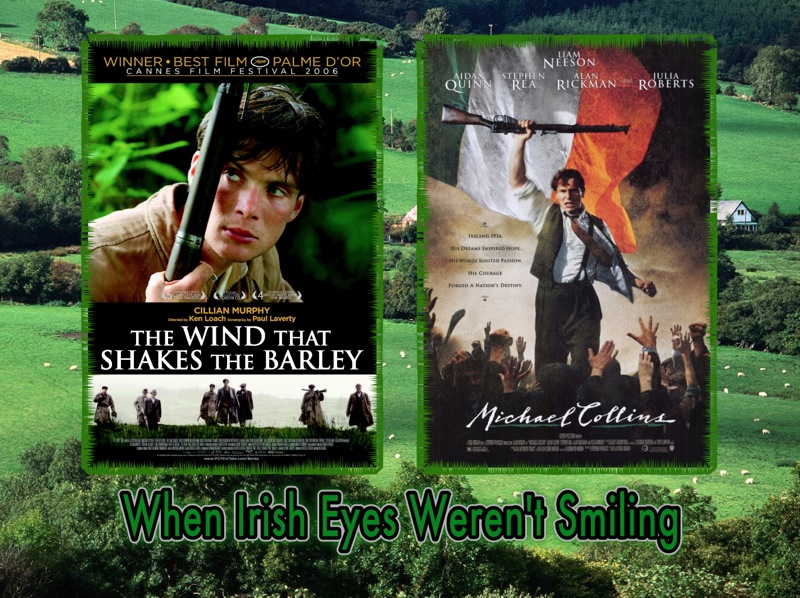
 The Smackdown
The Smackdown
Every St. Patrick’s Day, people worldwide celebrate the Irish by wearing shamrocks, marching in parades, even drinking green beer. It can be a ton of fun, to be sure, but the Ireland of fairly recent history was a very serious place where political battles were decided in revolution and civil war.
Our Irish Movie Smackdown pays tribute to those days by putting a couple of films in the ring together that tell the story. These two classic films of Irish-rebellion — The Wind That Shakes the Barley and Michael Collins — were made a decade apart. Back in the Clinton years, Liam Neeson starred in the title role as Irish rebel turned Free Stater, Michael Collins, and a few days before St. Patrick’s Day in 2007, Cillian Murphy played a rebel on the other side of the bloody Irish Civil War in The Wind That Shakes The Barley. They each tell stories about the years when Irish eyes were definitely not smiling…
Two powerful directors face off here, too: Neil Jordan for the first, and Ken Loach for the second. Both of their films attempt to make the Irish drive for freedom both understandable and dramatic for a film audience. Let’s assume — for the sake of our argument — that you’ve got the patience for one film to enlighten you about Irish political history and the time to watch it before St. Patrick’s Day. Which movie will give you the best understanding, and the best film experience?
The Wind That Shakes The Barley (2007)
The Wind That Shakes the Barley beat out much-hyped films like Volver and Babel to win the Palme D’Or at Cannes in 2006. Paul Laverty’s script tells the story of Damien O’Donovan (Cillian Murphy) and his brother Teddy (Padraic Delaney), and a tough gang of Irish Republican Army brothers, known as a Flying Column, who are the boots on the ground in a vicious guerrilla war against the Brits. When we first meet them, it’s 1920 and Damien wants nothing to do with the troubles that have descended once again on his homeland. Events won’t let him off that easily, however. First he witnesses a group of the British “Black-and-Tans” murder a 17-year-old because he insisted on giving them his name in Irish. Then it’s a beating given the train conductor for the first leg of his journey to England where he will continue his training to be a doctor. So he ends up joining his brother Teddy’s group instead and director Ken Loach’s powerful film about this sorry chapter in British and Irish history really takes off.
Films based on true events never quite lend themselves to the structure preached in all the screenwriting books. The Wind That Shakes the Barley is really two films, one after the other. The first is the story of the Rebellion. It ends when England and Ireland reach a peace agreement. It would give Ireland some economic independence, although the country must remain part of the commonwealth, loyal to the Crown. There’s more. Ireland will be cut in two as part of the treaty, and the North will forever remain part of England (something its citizens actually wanted).
This opens up the second film, the one about the Civil War which followed. We have seen what comes next in American films about the our own War Between the States where brother is literally pitted against brother. That’s what happens to Damien and Teddy. The peace proposal opens up the story of families torn apart. The stakes are beautifully laid out in the words of common people in uncommon times, some of whom feel the treaty has sold out the Irish people and so steadfastly refuse to give up their weapons, and the others who put on uniforms and replace the departing British as the authorities in charge of civil order. Now this film elevates once again to a tale of broken loyalties and hearts, ending in a bitter, tragic civil war that pits neighbor against neighbor. Between Damien and Teddy, one brother will ultimately be responsible for the other’s death. Those are real stakes and when I saw them played out, I actually shuddered.
PERSONAL DETOUR: My family spent two weeks in Ireland a few summers ago where we saw The Rolling Stones play before 70,000 Irish partygoers in the fields outside Slane Castle just north of Dublin. I guess the idea of tens of thousands of rowdy Irish cheering a band of Brits shows just how much healing has gone on during the past century (and even in the decades since Bloody Sunday).
HISTORICAL SIDEBAR: I make no claim to deep understanding of Irish politics, but the recent visit and watching these two fine films has given me a sense of the basics. Mostly, it seems, the Irish never, ever wanted to be part of the United Kingdom or British Empire. They wanted to be their own country. Period.They revolted numerous times, but the one that took began in 1916. Initially, it ended in disaster with the ringleaders rounded up by the British and executed. My son and I visited Kilmainham Gaol on our trip, the place where the revolutionaries of the 1916 Easter uprising were stood up before firing squads and executed. It affected me deeply. It reminded me that if my own country had tried and failed, the British would have similarly lined up Washington, Jefferson, Madison, Monroe, Adams, Henry and the entire gang and killed them, too.
This deadly response to the rebellion not only inflamed and united the country of Ireland, but it caused the Irish Republican Army to adopt new guerilla style tactics. From 1919 through 1922, the Irish fought the British with everything they had. This was their War for Independence (i.e. USA, think 1776). A treaty was agreed upon where they would be an Irish Free State but still part of the dominion, like Canada, and Northern Ireland would be split off and remain a part of Great Britain. This split the Irish into two factions: those who thought it was better than nothing and wanted to move ahead under the treaty, and those who said half a loaf of bread was no loaf at all. They fought a bloody Civil War (i.e. USA, think 1865).
Now, having said all this, we return to our Smackdown…
Michael Collins (1996)
In comparison to The Wind That Shakes the Barley, this film, Michael Collins, is a biopic. Even though the subject is the same, the treatment is night and day. Writer/director Neil Jordan made “Michael Collins” to tell the story of the Irish Republican Army’s main military strategist, how he heroically fought the entire British Empire to a standstill, tried to be a man of peace, and paid with his own life. What’s fascinating is that Collins, as he’s depicted by Liam Neeson, seems to be the inventor of urban guerrilla warfare that has since been played out in revolutionary struggles the world over. His tactics define asymmetrical warfare as it’s come to be known and it would probably have been good for war planners to have seen this film as they contemplated the invasion of Iraq. Mao Tse-tung actually studied and admired Collins. For real. When Collins was in prison after the failed Easter Uprising, he vows, “We won’t play by their rules, we’ll invent our own. We’ll be an invisible army, striking and disappearing.”
The actual Michael Collins was known as as both “the Big Fellow” and as “the man they couldn’t catch.” Neeson perfectly embodies his physicality and does a masterful job of inhabiting his soul. It’s a complex and complicated portrayal. Here is a character who first and foremost showed his passion for his country in warfare but, later, reversed his position and showed equal passion for peace and negotiation. He paid for his beliefs with his life, caught in a deadly ambush and killed at the age of 31.
As with The Wind That Shakes the Barley, the Michael Collins film is actually two films — the one about the Irish Rebellion and the one about the Irish Civil War.
From About.Com
Who Was Michael Collins?
There are several references to the real-life historical figure of Michael Collins (1890-1922) in The Wind That Shakes the Barley, and he appears in archival newsreel footage inserted into the movie. The charismatic Collins played a crucial role in Ireland’s struggle to become self-governing, and he built a reputation as a tireless fighter against the British. But after the Irish War of Independence dragged on for two-and-a-half years, Collins and others undertook the thorny task of meeting with British leaders to try to stop the bloodshed. The outcome was a negotiated settlement known as the Anglo-Irish Treaty, which was a problematic compromise.
Reaction to the Treaty in Ireland was mixed, with many reluctantly accepting it and many others bitterly opposing it. Some argued that Collins had gotten the best deal he could under the circumstances, but others believed he had sold out. In any case, the British military withdrew from southern Ireland, which became a new political entity called the Irish Free State with Collins as a key member of the government. But widespread discontent with the results of the Treaty soon boiled over, precipitating the Irish Civil War. When Collins went on an inspection tour in 1922, he was shot to death in an ambush in County Cork. According to the Encyclopædia Britannica, his killers were anti-Treaty insurgents.
The Scorecard
There’s a clear difference between these two films. Michael Collins is about the leadership struggle with the ordinary IRA members in the background. The Wind That Shakes the Barley is the exact opposite. It tells the story from the ground up. Yes, there are powerful and well-known leaders pulling the strings, but they are somewhere else. Here the rebellion is strictly personal. The Wind That Shakes the Barley stakes its claim in this regard in its opening scene — a group of young Irish men play a game of hurling which, given the war going on against the British who have forbidden public gatherings — ends up not in sports victory, but a bloody, tortured death.
We have, with these two superior films, the Upstairs/Downstairs of Irish Republican Army history. One of them tells the story of a cherished leader who fought for the treaty with the British — and the other tells the story of a brave foot-soldier who fought against that same treaty.
The only thing that feels out of place in Michael Collins is the shoe-horned romance with Kitty Kiernan (Julia Roberts). It is true that it occurred but it makes no difference here. It feels like a cutaway from the structural spine of the film and the fact that Julia Roberts is playing the role undermines our viewing experience because she is, after all, Julie Roberts, Movie Star.
And yet this is not a disqualifying distinction. The rest of Michael Collins soars, powered along by brilliant performances, powerful drama and the backdrop of tragedy.
Critics liked them both. Rotten Tomatoes gave Michael Collins a 78% fresh rating and The Wind That Shakes the Barley an 88% positive score.
The Decision
This reminds me of an earlier Smackdown I’d done pitting Prefontaine against Without Limits. Both films were flawed, in very different ways, and neither one, by itself, managed to truly capture the story or the spirit of the martyred long-distance runner. I ended up picking the film that most captured the character’s spirit, even if it played even more fast and loose with the facts.
We have the same kind of issue here. One film captures the spirit of the Irish Rebellion on a more character level; and the other captures it on the level of men shaping large events. It’s clear to me that anybody who truly wants to understand what’s going on might want to watch both, and at least read the Wikipedia entry or a good encyclopedia for the background.
All well and good, but we have to choose. If you’re going to pick a single film and try to understand how it came to pass that the Irish finally found the freedom they had longed for, then you should get the DVD for The Wind That Shakes the Barley, grab a pint of Guinness, maybe cook up a good Irish stew, and give it a watch. But don’t expect to be too kicked back. This is no Waking Ned Devine. This is tough stuff, and it explains a lot.

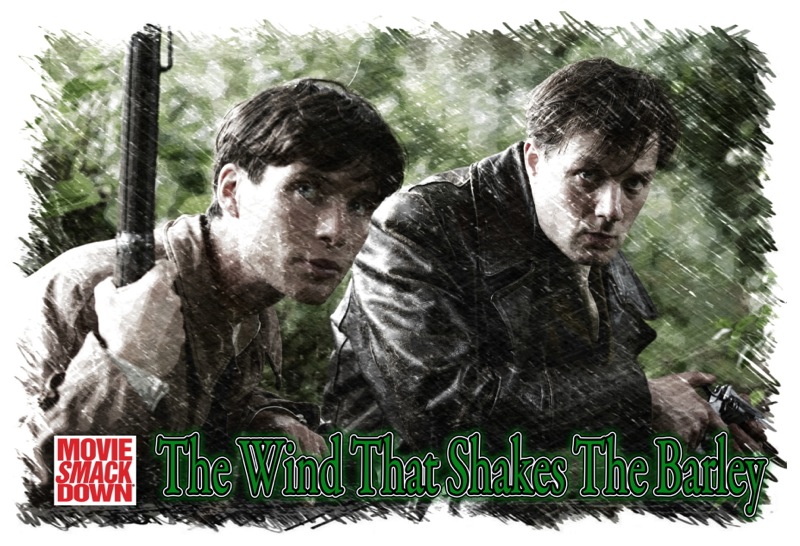

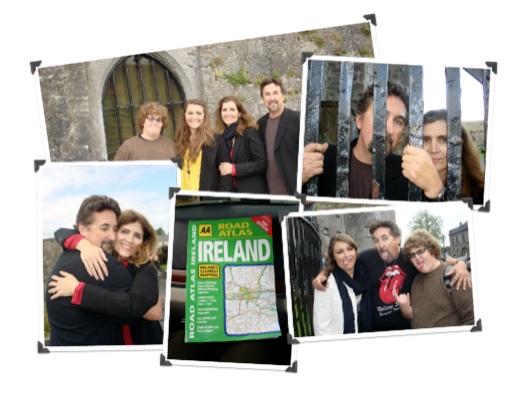
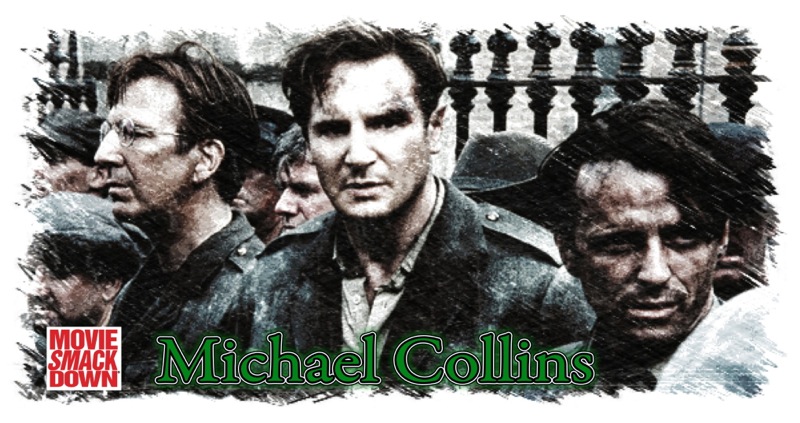

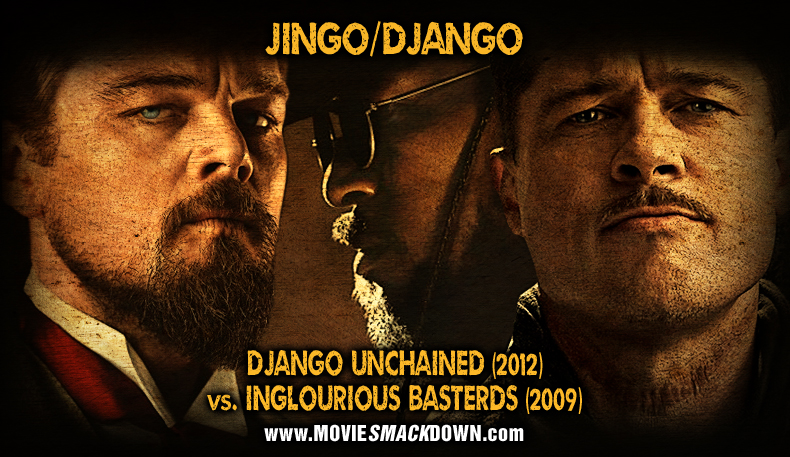
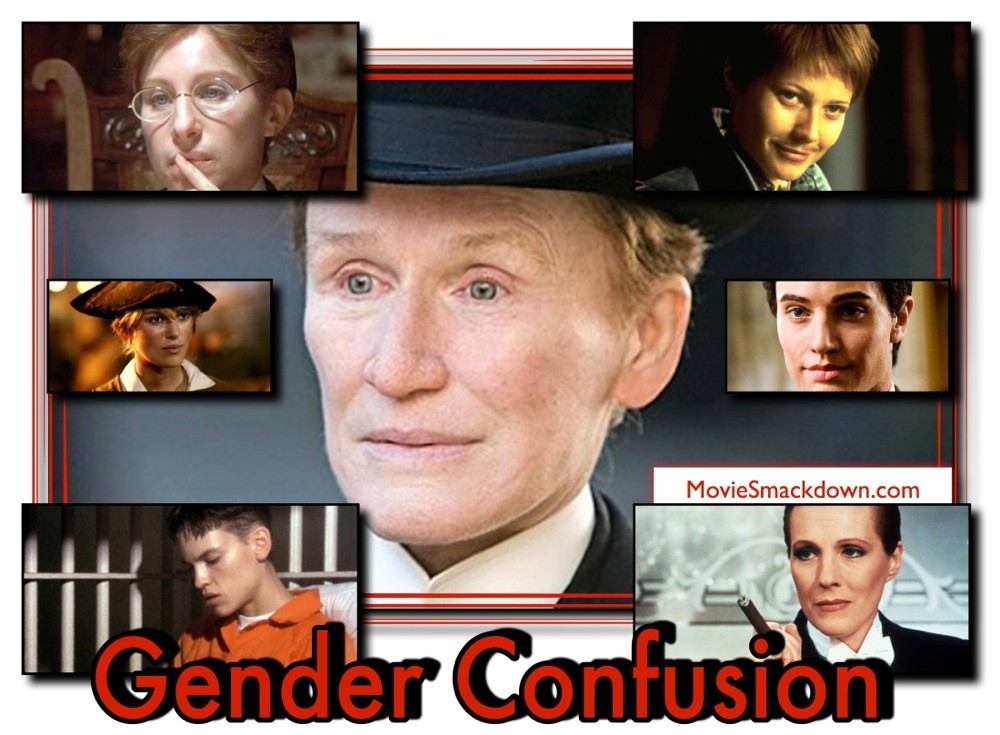

Leave a Reply